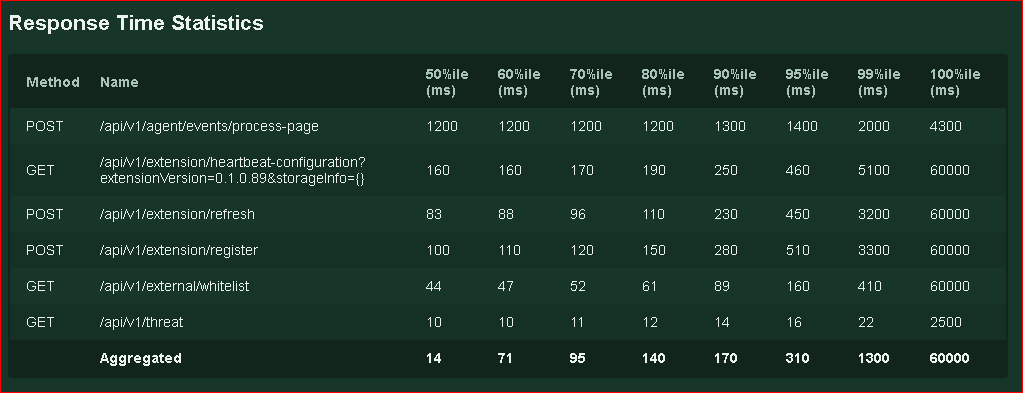Pixm - Load Testing for 250K users
- Web
- Mobile
- Desktop
Pixm, a computer vision cyber security startup, protects enterprises from undiscovered, non-traditional phishing attacks.
Pixm delivers a frictionless browser solution, a browser extension that security professionals can deploy to an unlimited number of devices in minutes. It operates in the browser at the moment a link is clicked or at “point-of-click,” protecting users regardless of the channel the link is delivered. The browser extension communicates through REST APIs with a multi-tenant serverless computer vision based backend deployed on Azure cloud infrastructure to identify, record and stop targeted spear phishing attacks. The third component is an enterprise administration portal where administrators can login for management of various aspects of the installation, reports and configuration.
Our primary objective was to load test 250,000 extension users onto the product without compromising performance, stability, or user experience. We aimed to showcase our ability to handle a substantial user base while ensuring that our infrastructure remained reliable and scalable. To achieve this, we utilized the Locust tool to simulate and stress test our APIs under various workloads.
Our infrastructure was built on Azure cloud services to ensure high availability, scalability, and flexibility. The key components of our infrastructure included:

During our testing phase, we conducted a comprehensive performance test to simulate the onboarding of 250,000 users generating millions of requests over a period of 10 hours of business time. The objective was to evaluate the performance and stability of our infrastructure under realistic usage conditions. We generated 200 days of data and populated it in the database. The results of our testing are as follows:
During the testing process, we closely monitored key performance metrics, including response times, throughput, and error rates. We made several optimizations to our infrastructure configuration and fine-tuned application components as needed to ensure optimal performance and stability.


Through our meticulous testing and optimization efforts, we successfully achieved the milestone of load testing the onboarding 250,000 users using our product. Key highlights of our accomplishments include:
By leveraging the power of the Azure cloud services and employing the Locust tool for API testing, we successfully onboarded 250,000 users onto our product while maintaining exceptional performance and stability. Our infrastructure components, such as Azure SQL Server Elastic Pool, VMSS, Function Apps, and Application Gateway, played a crucial role in achieving our performance milestone. We are proud to showcase our ability to handle a growing user base and deliver an outstanding user experience. This achievement underscores our commitment to continuous improvement and the delivery of high-quality products to our customers.